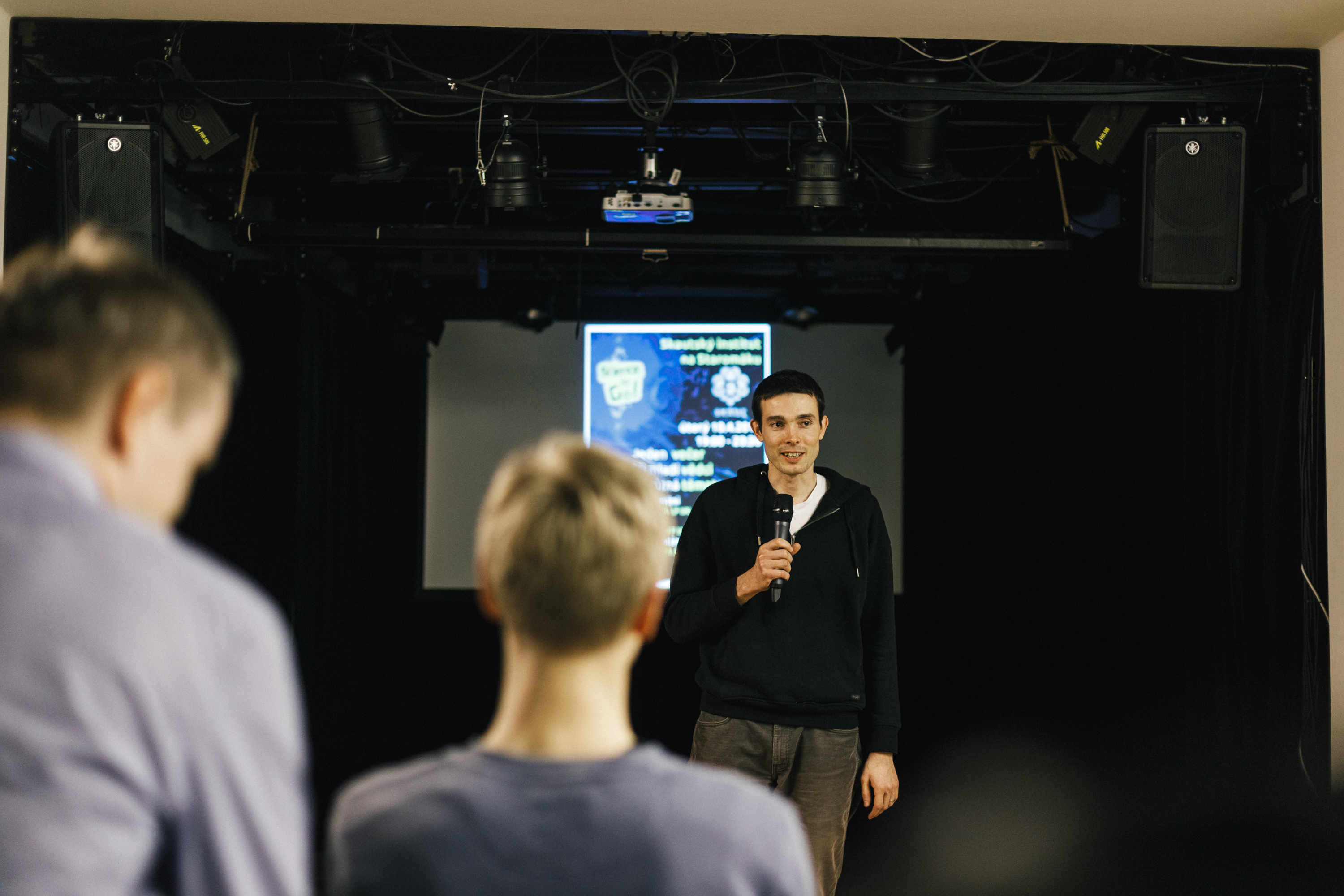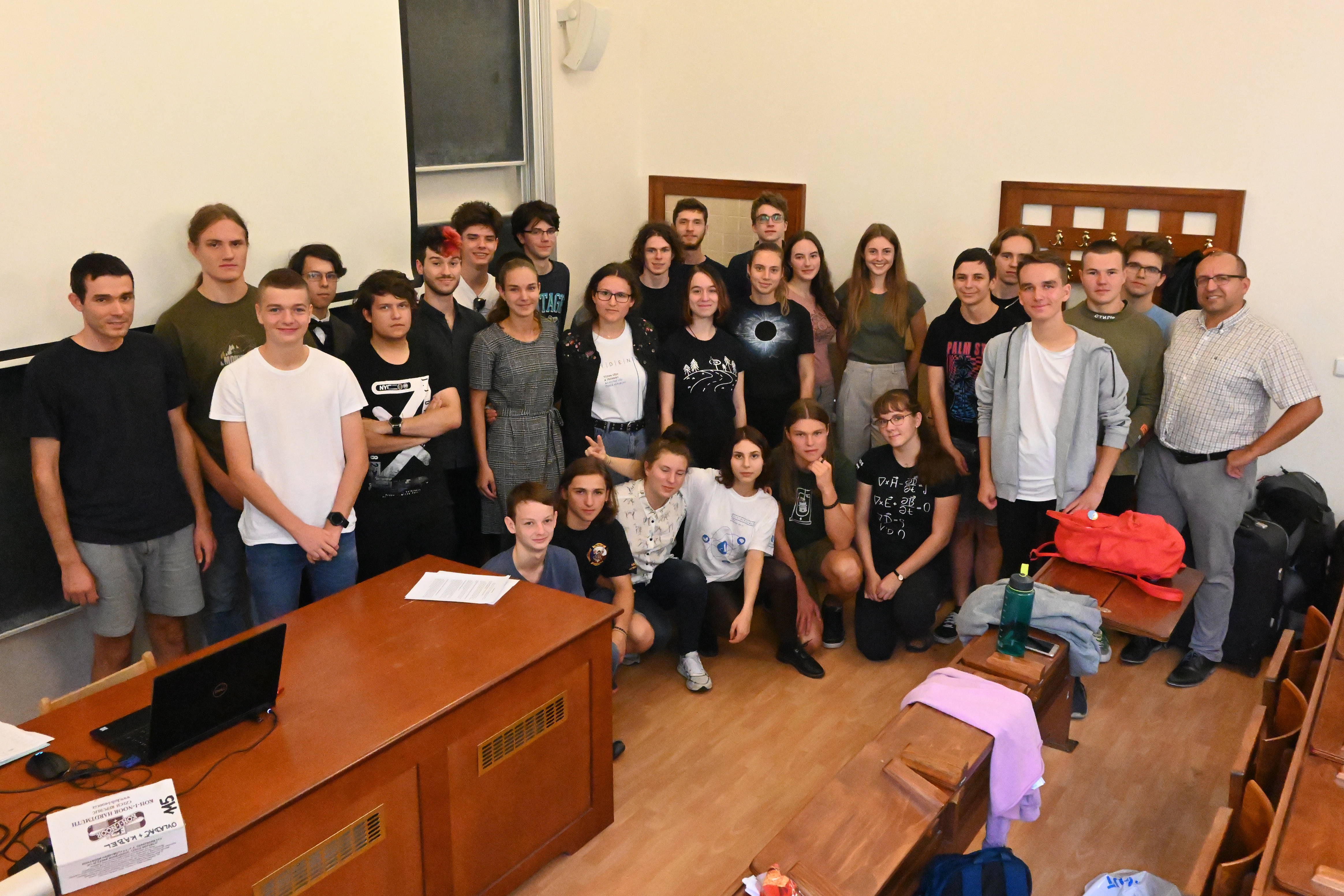This month, we meet Vojtěch Pleskot, particle physicist at Charles University in Prague and long-time member of the ATLAS experiment at CERN. With a passion for both science and education, Vojtěch has found creative ways to bring particle physics to students and the public, from local internships to large-scale science stages at music festivals. In this interview, he tells us more about his journey and what drives his outreach work.

- Can you introduce yourself and share how you became involved in the world of scientific outreach?
I’m a particle physicist at Charles University in Prague, Czech Republic, and I conduct data analysis within the large international ATLAS experiment at CERN. Early in my career, I seriously considered becoming a high school physics teacher. Fortunately, two of my colleagues and mentors, Jiří Dolejší and Martin Rybář, showed me that it’s possible to combine scientific research with education by engaging in outreach alongside academic work. That inspiration launched my ongoing commitment to outreach, particularly for high school students. Since then, I’ve been involved in activities such as the International Masterclasses, student research projects, and organising a short-term internship programme called Particle Prague.
- What has been the most meaningful outreach activity you’ve organized or participated in, and why?
From a personal perspective, the most meaningful activity is the Particle Prague internship programme for high school students. Every two years, we welcome around thirty selected students to Prague, where they visit particle and nuclear physics labs, meet with scientists, experience the academic environment, work on a small scientific project, and participate in social activities. Each time, the students leave Prague full of enthusiasm for physics, many of them go on to pursue it at university.
I’d also like to mention a second project aimed at adult audiences: The Big Bang Stage at the Colours of Ostrava music festival. It offers about 30 hours of engaging programming related to particle and nuclear physics during the four festival days. Around 3,000 visitors attend the stage annually, enjoying a truly unique experience. The concept was originally developed by my dear CERN colleague Connie Potter, who also helped me launch the Czech version in 2019. Soon after, our colleague Martin Rybář took over the organization and has been running it very successfully ever since.
- What inspires you the most about sharing particle physics with the public?
Particle physics is the most fundamental branch of science, asking questions like “What is matter made of?” and “What are the origins and fate of the Universe?” These are questions that fascinate both scientists and the general public alike. I love seeing the spark in people’s eyes during outreach events, it’s incredibly motivating. Over the years, I’ve realised something important: the audience’s enthusiasm doesn’t just benefit them, it also helps me maintain my own excitement for the often-challenging daily work of a scientist.

- What is the most important message you would like to convey to younger generations through your outreach efforts?
Science is worth pursuing, not only because it’s thrilling to uncover the fundamental workings of nature, but also because it brings real societal benefits, from advances in electronics and imaging to applications in medicine and mathematics. The most important message I’d like to share is that you don’t need to be a genius to become a scientist. What truly matters is curiosity and persistence. Today, breakthroughs in particle physics are never the work of a single person, they are the result of focused, collaborative efforts by international teams. That spirit of cooperation and determination is what drives discovery forward.


